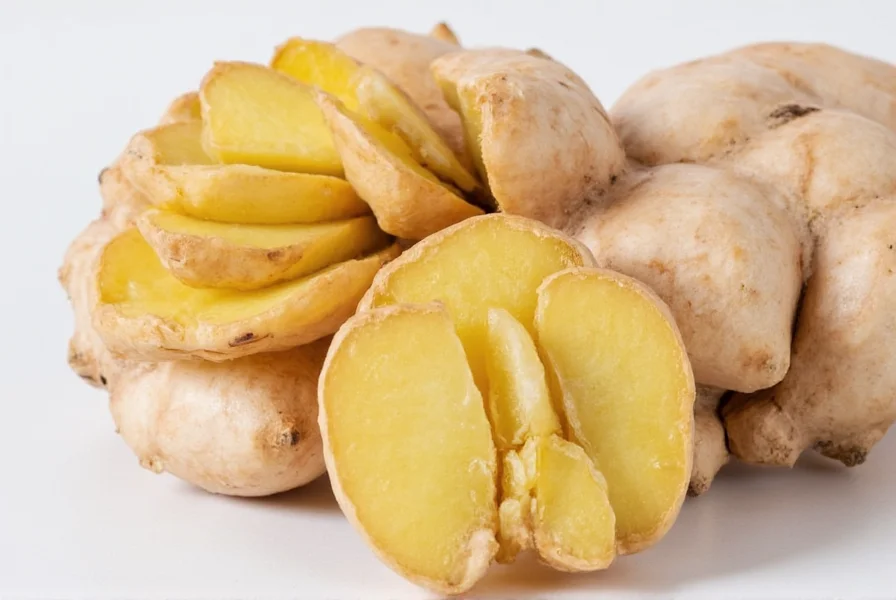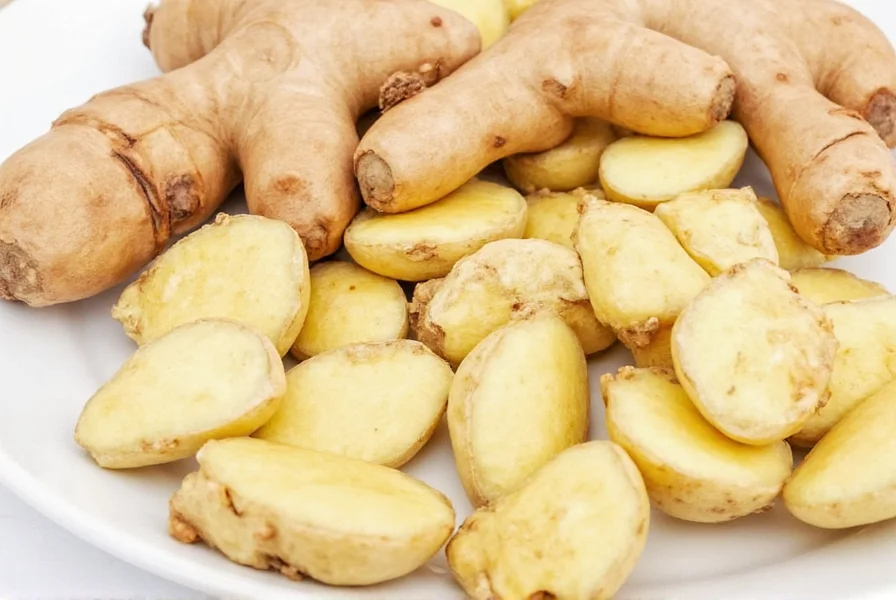Understanding the nuances of Asian ginger varieties helps home cooks and professional chefs select the right type for specific dishes. This comprehensive guide explores the botanical characteristics, regional variations, and practical applications of ginger throughout Asia.
Understanding Asian Ginger Varieties
Ginger (Zingiber officinale) originated in Southeast Asia and has been cultivated for over 5,000 years. The term "Asian ginger" encompasses several regional varieties that have developed unique characteristics based on local growing conditions and selective breeding.
The three primary types of asian ginger varieties include:
| Variety | Appearance | Flavor Profile | Primary Growing Regions |
|---|---|---|---|
| Chinese Ginger | Large rhizomes, smooth yellow-brown skin | Moderate heat, aromatic, slightly sweet | Southern China, Thailand, Vietnam |
| Japanese Ginger | Smaller, slender rhizomes with pink tips | Milder, more delicate, less fibrous | Japan, Korea |
| Indian Ginger | Thick, tough skin, pale yellow flesh | Strongest heat, robust, earthy | India, Indonesia, Malaysia |
Culinary Uses of Asian Ginger Across Different Cuisines
The culinary uses of fresh asian ginger vary significantly across regional cooking traditions. In Chinese cuisine, ginger forms the "holy trinity" with garlic and scallions, providing foundational flavor in stir-fries and braises. Chefs typically mince or slice ginger to release its essential oils without overwhelming other ingredients.
Japanese cooking favors young ginger (shin-shoga), which appears in pickled form (gari) served with sushi. The difference between chinese and japanese ginger becomes particularly apparent in preparation techniques—Japanese cuisine often uses ginger more delicately, while Chinese cooking incorporates it more robustly.
Indian and Southeast Asian cuisines utilize ginger more aggressively, often combining it with garlic to form the base of curries and spice pastes. In these traditions, fresh ginger root provides both heat and aromatic complexity that dried ginger powder cannot replicate.
Selecting and Storing Asian Ginger
Knowing how to select quality asian ginger ensures optimal flavor in your cooking. Look for firm rhizomes with smooth, unwrinkled skin and no soft spots. The ginger should feel heavy for its size, indicating high moisture content and freshness.
When comparing fresh asian ginger vs other ginger types, note that Asian varieties typically have thinner skin and more pliable texture than African or Australian ginger varieties. The best ginger for cooking has a spicy, citrusy aroma when scratched.
For proper storage, keep unpeeled ginger in a paper bag in the vegetable crisper drawer. This method maintains humidity while preventing excess moisture that causes spoilage. Alternatively, submerge ginger in sherry or vodka in an airtight container for extended refrigerated storage—this technique preserves flavor while preventing mold.
Practical Applications in Modern Cooking
Asian ginger in traditional cooking serves both flavor and functional purposes. Its natural enzymes help tenderize proteins, making it essential in marinades for meats and fish. The compound gingerol provides not only heat but also antioxidant properties that contribute to ginger's preservative qualities in fermented foods.
When substituting between varieties, consider the dish's requirements. Use milder Japanese ginger for delicate fish preparations or raw applications. Choose robust Indian ginger for hearty curries and spice blends. Chinese ginger offers versatility across most applications, making it the most commonly available variety in international markets.
For optimal flavor extraction, grate ginger fine when adding to liquids, or slice thinly against the grain for stir-fries where you want distinct ginger pieces. Remember that cooking time affects ginger's flavor profile—longer cooking reduces sharpness while enhancing sweetness.
Common Questions About Asian Ginger
What's the difference between regular ginger and Asian ginger?
"Regular" ginger typically refers to the same Zingiber officinale species as Asian ginger. The distinction lies in regional varieties—Asian ginger encompasses specific cultivars developed in Asia with thinner skin, higher moisture content, and more nuanced flavor profiles compared to some African or Australian varieties which may have thicker skin and stronger heat.
Can I substitute one Asian ginger variety for another in recipes?
Yes, but with flavor adjustments. Japanese ginger's milder profile works well in raw applications but may require 25-50% more volume when substituting for Indian ginger in cooked dishes. When replacing Chinese ginger, maintain similar quantities but adjust cooking time—stronger varieties benefit from slightly longer cooking to mellow their heat.
How can I tell if Asian ginger has gone bad?
Fresh Asian ginger should be firm with smooth skin. Discard ginger that shows wrinkles, soft spots, or mold. A strong, unpleasant odor or slimy texture indicates spoilage. Slightly wrinkled ginger can still be used if the interior remains firm and aromatic—simply peel away affected areas before use.
Why does Japanese ginger sometimes have pink tips?
The pink tips on young Japanese ginger (shin-shoga) result from natural pigmentation in the growing rhizome. This characteristic appears in spring-harvested ginger and indicates youth and tenderness. The pink color fades as the ginger matures and develops its characteristic yellow flesh.
What's the best way to freeze Asian ginger for long-term storage?
Peel and grate fresh ginger, then freeze in ice cube trays covered with water or sherry. Once frozen, transfer cubes to airtight containers. This method preserves flavor compounds while making portioning easy for cooking. Whole ginger can also be frozen unpeeled and grated directly from frozen when needed.

Understanding these distinctions helps cooks make informed choices when selecting ginger for specific culinary applications. Whether preparing traditional Asian dishes or incorporating ginger into contemporary recipes, recognizing the unique qualities of each Asian ginger variety enhances both flavor and cooking experience.











 浙公网安备
33010002000092号
浙公网安备
33010002000092号 浙B2-20120091-4
浙B2-20120091-4